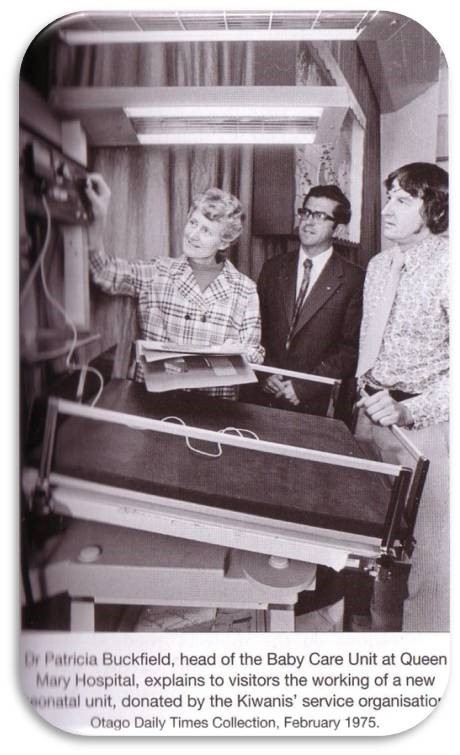The Dunedin Study
Background
In the 1960s and early 1970s, most obstetric and paediatric services in the developed world made important advances in the care of infants before, during, and immediately after birth. New techniques and advances were developed to identify and care for high risk pregnant mothers and to manage the process of birth. Neonatal intensive care units with new technology became available to care for newborns' whose start to life was complicated by such problems as low birth weight, preterm delivery, and breathing or other problems, such as jaundice. The aim of the new technology was to save infants' lives and to protect them. As a result infant mortality rates dropped.
However, questions were raised about whether the new technology was decreasing the mortality rate but increasing the morbidity rate. In the late 1960s, the new medical technology became a feature of the work of Queen Mary Hospital, Dunedin's only obstetric hospital. Almost all (98 per cent) of Dunedin's infants were born at Queen Mary at that time and it was staffed mainly by obstetricians and paediatricians who were also members of the academic staff of the University of Otago Medical School. In addition to providing medical services applying the latest technology, medical staff were involved in a number of research projects that aimed to monitor and improve the quality of the services provided. It was one of these projects conducted by the late Dr Patricia Buckfield, which eventually led to the establishment of the Dunedin Multidisciplinary Health and Development Study.
Dr Buckfield, at that time was a senior paediatrician specialising in neonatology, decided to study and record perinatal histories in the total newborn population of Dunedin over a period of time. This eventually involved studying all the births at Queen Mary Hospital from 1967 to 1973, and recording the obstetric, perinatal and neonatal histories of more than 12,000 babies and their mothers. The focus of these studies was the health of the newborn infant. Dr Buckfield and her colleagues were also interested in the longer-term development of the infants and wanted to find out whether particular perinatal problems (e.g. preterm delivery, low birth weight, birth hypoxia, hyperbilirubinaemia) might be associated with later problems. This led to the development of a successful proposal to the Medical Research Council of New Zealand for funding for a follow-up study of a sample of 250 four- and five-year olds who had been born in 1968, half of whom had experienced perinatal problems and half whose start to life had been apparently normal. This early study was known as the Queen Mary Hospital Multidisciplinary Child Development Study. Phil A. Silva, an educational psychologist, was invited to design and carry out the developmental and psychological assessments of the sample for this study, which was a collaborative effort involving personnel from paediatrics, obstetrics and child psychology. The children were administered numerous tests of psychological development, their behaviour was observed, they were weighed and measured, had their vision and hearing tested, and their neurological functioning assessed by paediatricians. Results from this study showed that certain perinatal problems were associated with small but significant disadvantages in later language development and intelligence. The relative impact of external influences, including socio-economic status, parental characteristics and childhood experiences on the intelligence of the children was also reported.
The most striking finding from the early study, however, was unexpected. The examination and assessment of the four- and then five-year-olds, and an interview with their parents, revealed that a relatively large percentage of the children had problems. These included problems of development (e.g. language and/or motor delays), behaviour problems (e.g. being very difficult to manage), hearing problems, vision problems and other health problems. It was also found that a considerable number of children had experienced injuries, some of which left them with long-lasting disabilities (e.g. as a result of burns and scalds). Many of the problems detected were quite serious, causing distress to the children and their parents, and likely to affect the children's schooling and longer-term development. Despite this, many of the problems had not previously been detected or addressed by the existing services. Because this early study was not designed to investigate the broader questions of child health and development, and because of a general lack of accurate information in New Zealand about children at the time, it was decided to attempt a larger-scale study of younger children. The aim of this study would be to investigate the nature and prevalence of health and development problems and also some causal factors, implications and longer-term consequences.

